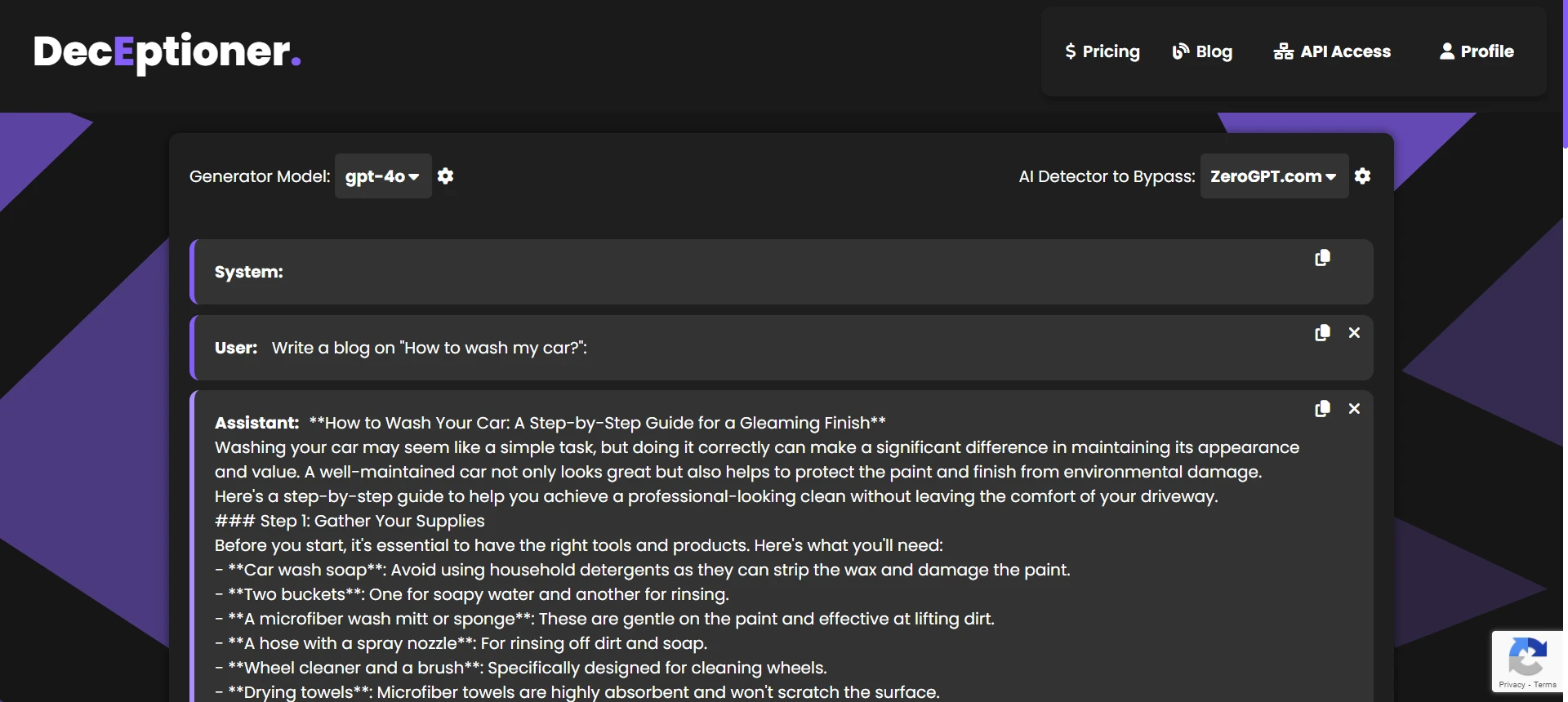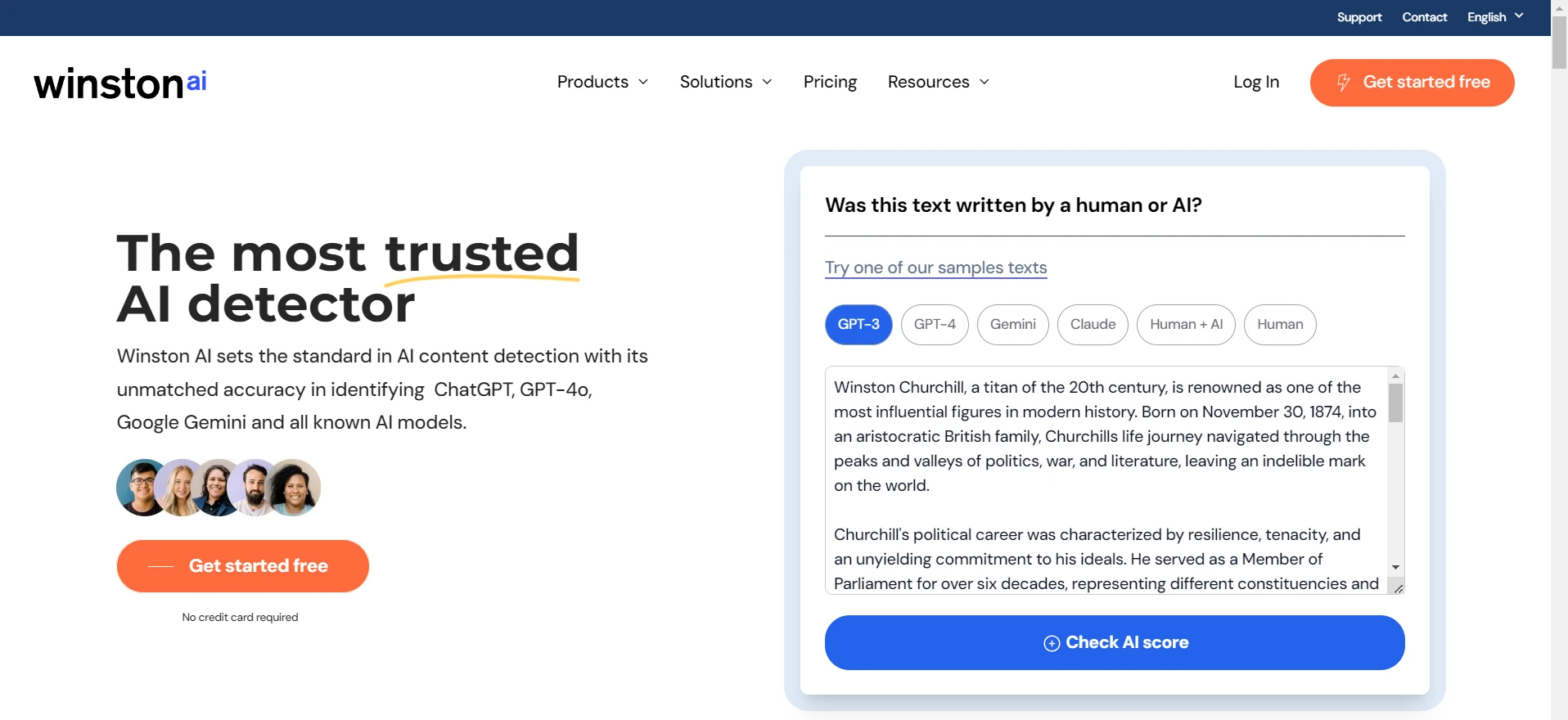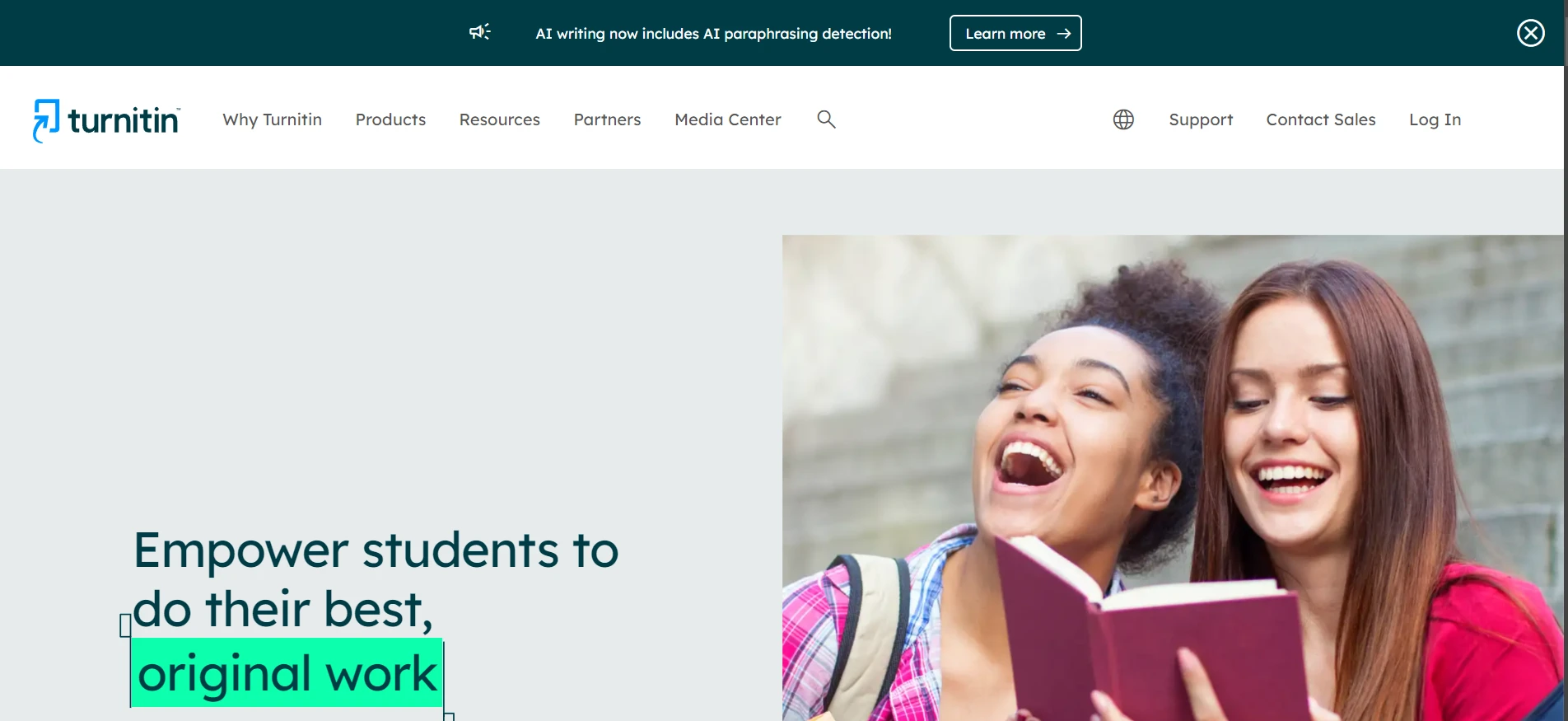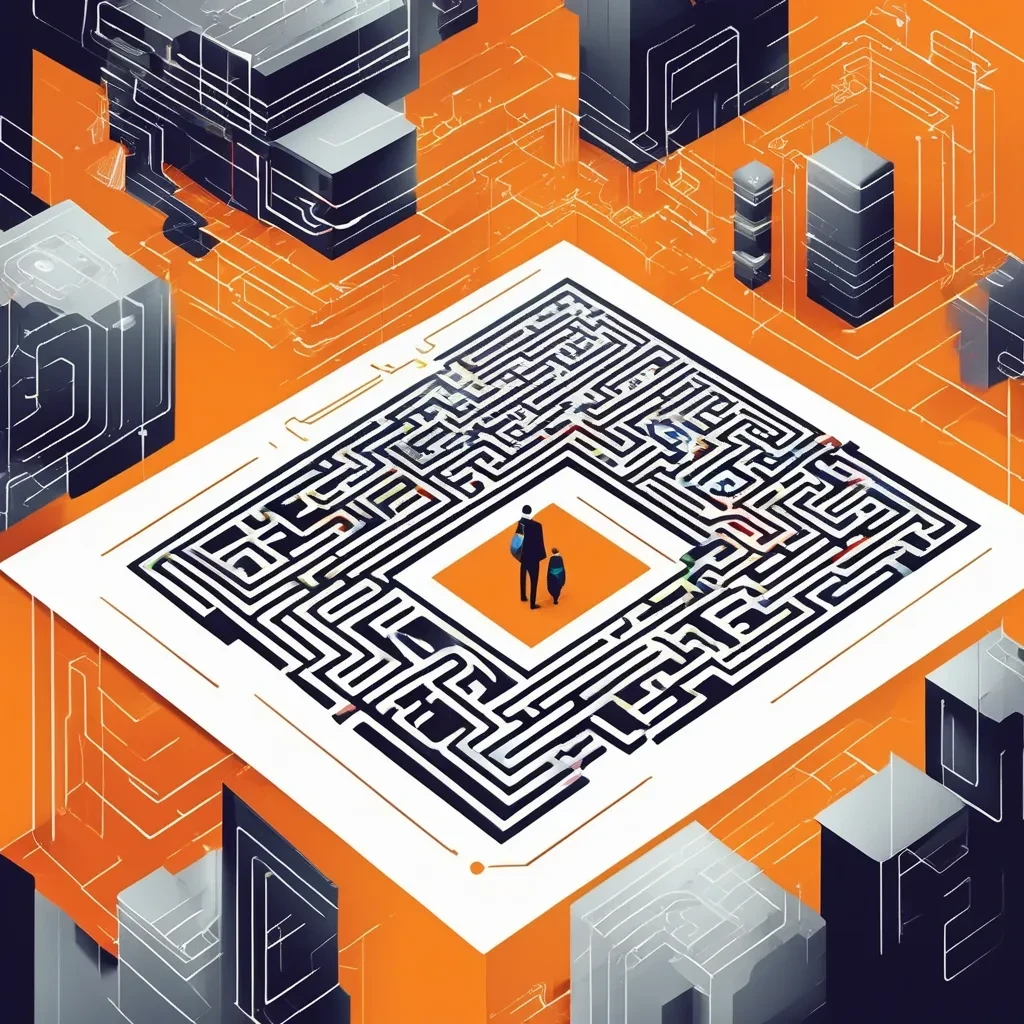As we all know it Quillbot gets pretty easily detected by many AI detectors. However, is it the same for ZeroGPT? The short answer is YES. The longer answer is the devil lies in the details. Keep reading to know more about it.
Why Quillbot gets detected by ZeroGPT?
The simple answer is just like Wordtune, Quillbot is not made to bypass AI detectors. You can see this on their website as well. They never advertise bypassing AI detectors like ZeroGPT or GPTZero as a feature on their website or any marketing material. Hence, if it is not made to accomplish this task it won't be able to do it consistently.
Quillbot is used widely by students and professionals to rewrite their work. It can help remove grammatical mistakes, improve fluency, and even generate summaries. But when it comes to bypassing an AI detector like ZeroGPT, it fails most of the time.
Key findings from our dataset (n = 100)
You can view the raw data in this google sheet.
1. Overall “pass” rate
Using a 50% ZeroGPT score as the cutoff for “AI-written”, only 23% of Quillbot paraphrases fell below the line and were therefore treated as “human-written”.
2. 95% confidence interval
The 95% confidence interval for this pass rate is 14.8% – 31.2% (binomial, n = 100).
3. Mode-by-mode performance
Shorten and Humanize are the only settings where more than one-third of texts escaped detection. Every other mode left the paraphrase flagged as AI the vast majority of the time.
4. “Likely human” vs “likely AI”
If we tighten the bar and count only scores below 25% as safely “human-like”, just 8% of paraphrases succeed; 77% are firmly “likely AI” and 15% land in an “uncertain” middle band (25–50%).
5. Practical reliability as an “AI bypasser”
Not dependable. Even in its best-performing modes, Quillbot fails ZeroGPT’s detection about half the time. Risk of false negatives remains high. A content reviewer using a single detector might miss some paraphrases, but ensemble or stricter tools would likely catch many of the “uncertain” cases as well.
6. Trade-off with quality
The Shorten and Humanize modes that lower detection scores also compress or simplify wording, which may not suit every use-case.
Here is a table of results from our dataset:
| Mode | Samples (n) | Mean ZeroGPT Score | % Flagged as AI | % Passed as Human |
|---|---|---|---|---|
| Shorten | 11 | 40.4 % | 45.5 % | 54.5 % |
| Humanize | 11 | 51.8 % | 54.5 % | 45.5 % |
| Simple | 11 | 70.9 % | 63.6 % | 36.4 % |
| Formal | 11 | 77.6 % | 72.7 % | 27.3 % |
| Creative | 10 | 73.6 % | 80.0 % | 20.0 % |
| Expand | 12 | 89.0 % | 91.7 % | 8.3 % |
| Standard | 12 | 89.0 % | 91.7 % | 8.3 % |
| Fluency | 11 | 92.3 % | 90.9 % | 9.1 % |
| Academic | 11 | 94.4 % | 100.0 % | 0.0 % |
Which rewriter is made to do this task?
Tools like Deceptioner might be better if your primary goal is to bypass AI detectors. The thing that differentiates these tools from the likes of Quillbot is that they are purpose-built for AI detector evasion. Quillbot might slip through occasionally but will not be consistent.
Why is it easy for ZeroGPT to detect Quillbot?
ZeroGPT has a sophisticated algorithm which probably not only includes machine learning models trained on detecting manipulation done by paraphrasing, it also might be using stylometric analysis to pick up on patterns that point to AI rewriting.
LLMs (AI) have a tendency to write in a certain style no matter how you paraphrase them. They also typically have something called low perplexity and burstiness scores which AI detectors like ZeroGPT often leverage to detect text generated or heavily influenced by AI.
Key components that ZeroGPT might use:
| Component | Description |
|---|---|
| Natural Language Processing (NLP) | Uses NLP algorithms to analyze text patterns and structures, identifying anomalies that might indicate AI-generated content. |
| Stylometric Analysis | Examines writing style metrics, such as vocabulary usage and sentence complexity, to detect inconsistencies that arise due to AI paraphrasing. |
| Machine Learning Models | Trains models on large datasets of AI-generated and human-written text to recognize subtle differences in text characteristics. |
| Contextual Understanding | Evaluates the logic and consistency of the content to see if it aligns with how a human usually writes. |
| Text Coherence and Consistency | Assesses the flow of ideas to spot typical clues of AI-based rewriting, like uniform sentence lengths or repetitive structures. |
| Data Patterns and Anomalies | Zooms in on unusual or repeated patterns that suggest non-human text generation, such as identical transitions or over-usage of certain words. |
| Source and Reference Check | Checks for authenticity and accuracy of citations or references if any, identifying if they might be AI-fabricated or distorted. |
Visualisations for Quillbot vs ZeroGPT
1. Box plots by mode ― Help us quickly see the full spread and medians of ZeroGPT scores for each Quillbot setting.
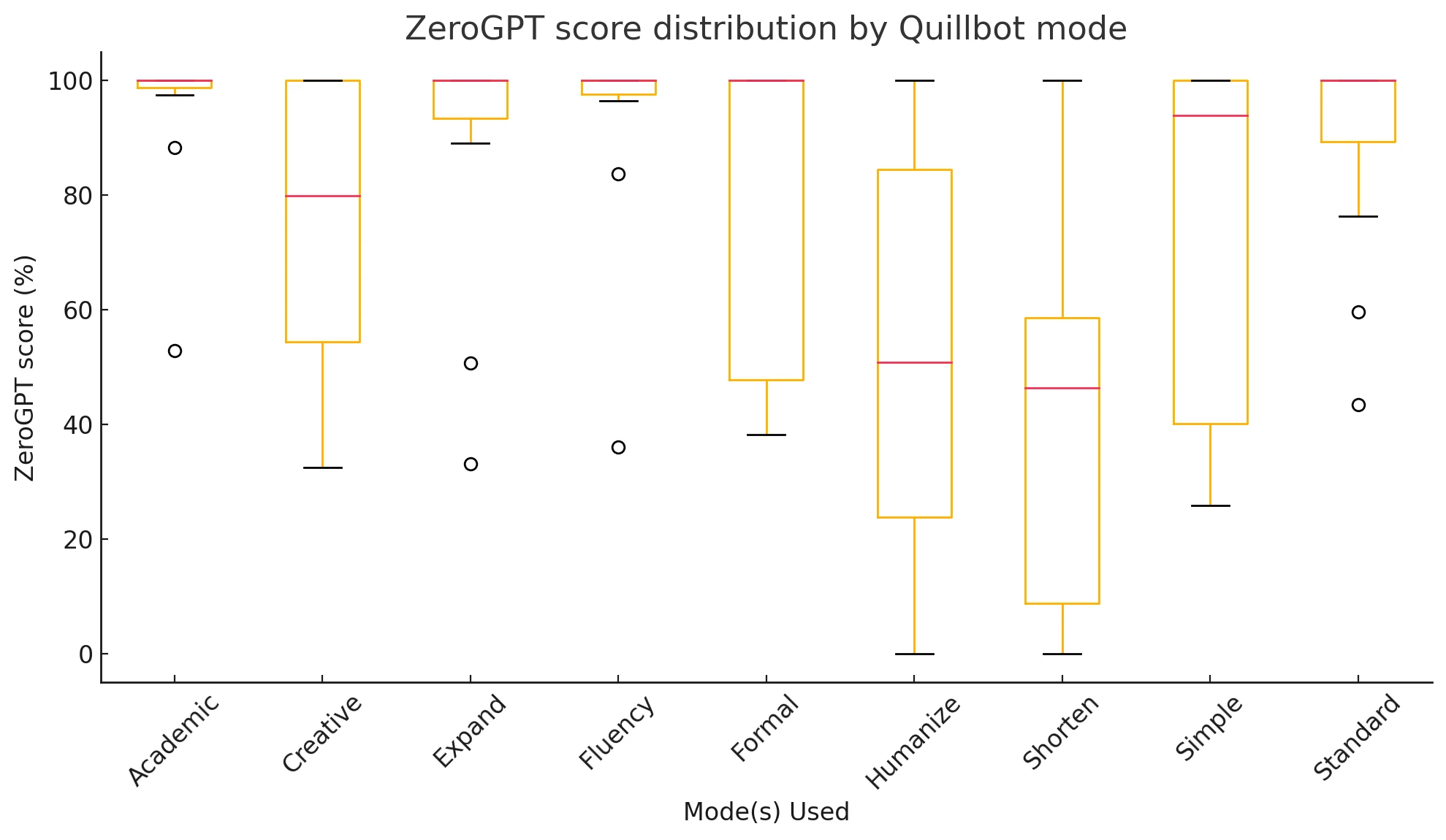
2. Histogram ― Illustrates the overall tilt toward very high (AI-like) detection scores with just a small tail of lower-scoring paraphrases.
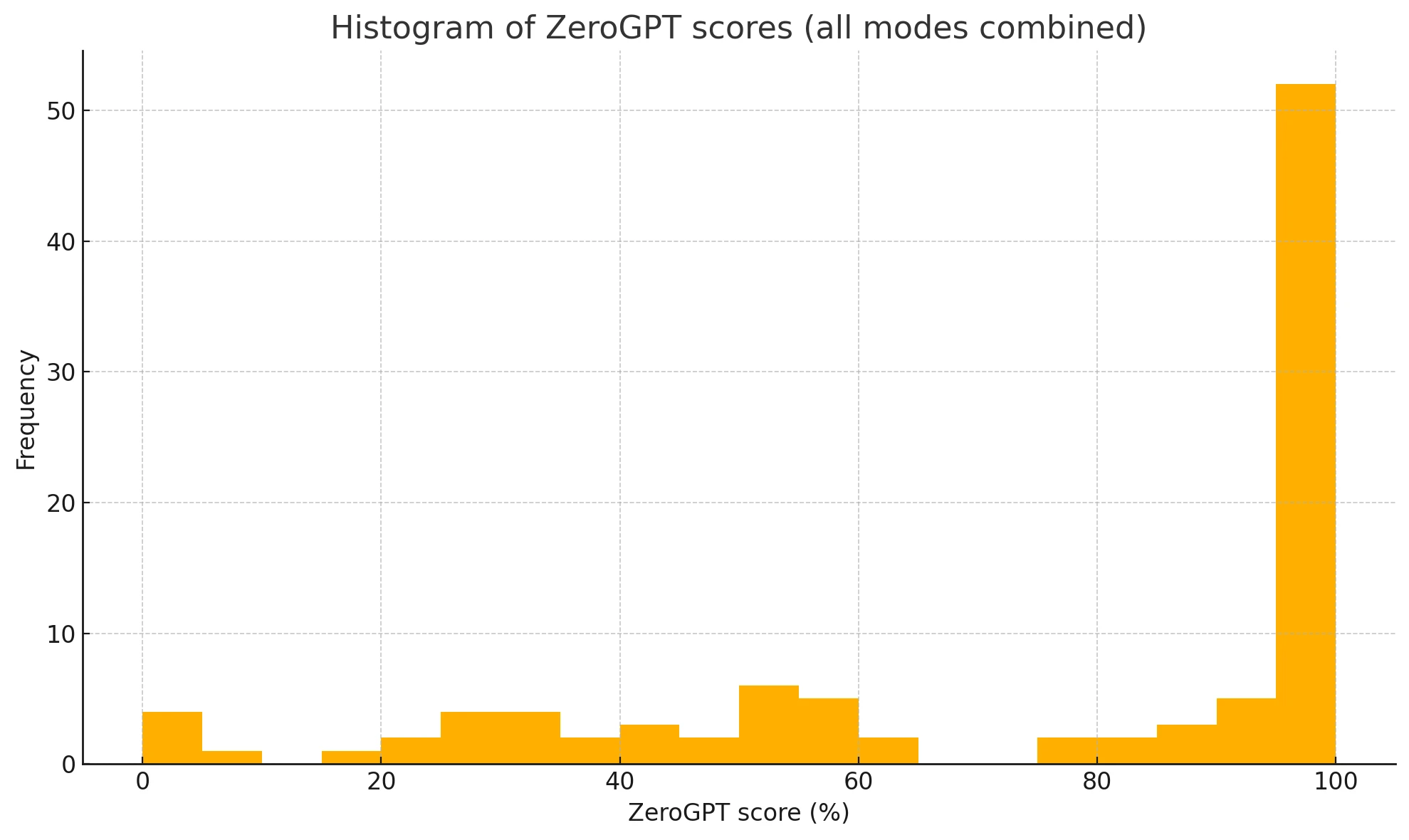
3. Pass-rate bar chart ― Shows how only Shorten (≈55 %), Humanize (≈45 %) and, to some extent, Simple (≈36 %) break the 25 % mark. Every other mode fails more than 80 % of the time.
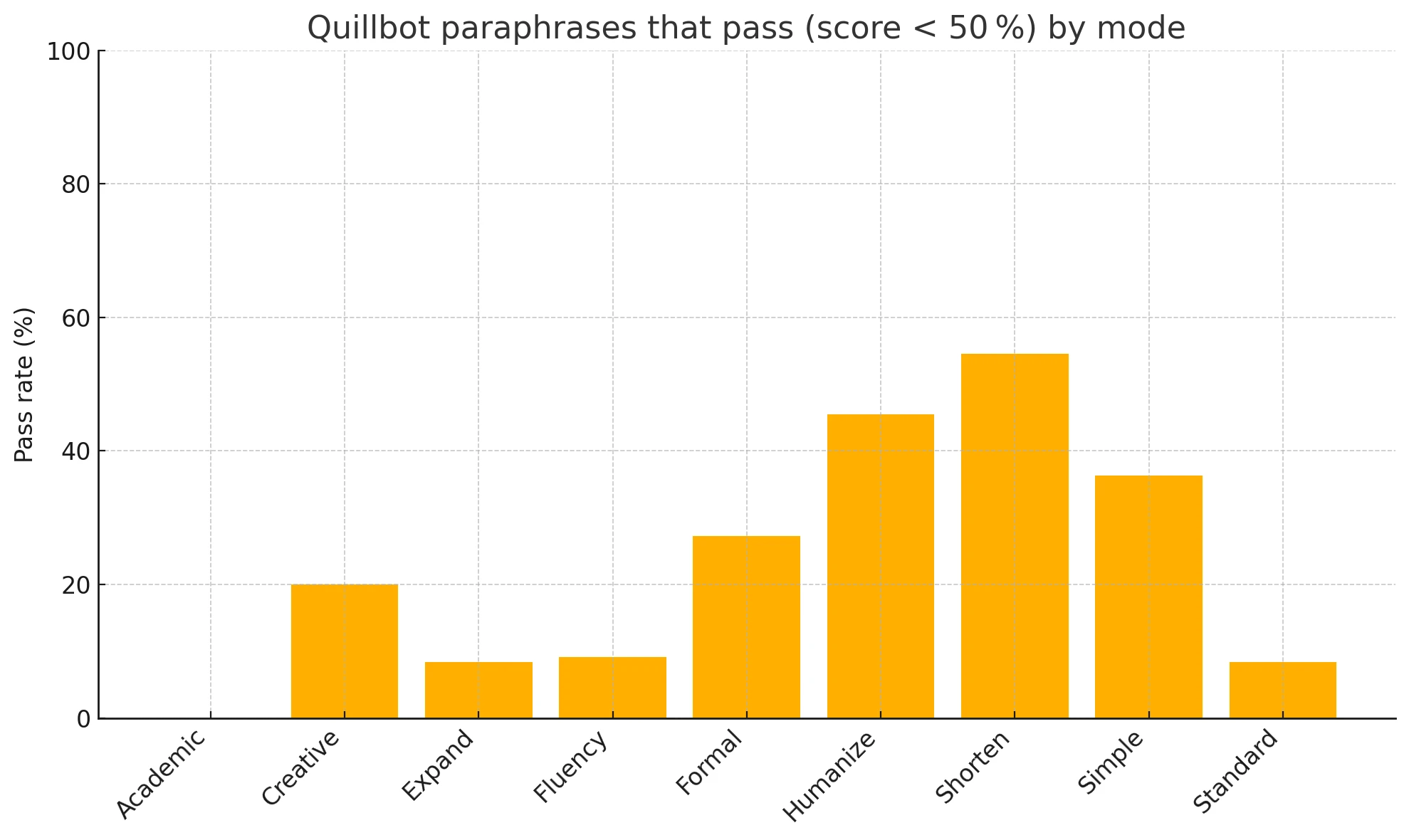
These pictures reinforce that Quillbot’s paraphraser slips past ZeroGPT only in a minority of cases, and even its best modes leave you flipping a coin.
Frequently Asked Questions
Q1. Does ZeroGPT detect Quillbot?
Yes, obviously it can detect Quillbot because of two simple reasons. The first reason is that Quillbot paraphrasing doesn’t target bypassing AI detection. Secondly, Quillbot is way too popular and those who made ZeroGPT would have considered it and implemented guardrails against it.
Q2. Is using Quillbot plagiarism?
No, the mere act of using Quillbot is not plagiarism because you can rewrite content written by you and it is still your original piece. However, it might trigger ZeroGPT's AI detection algorithms.
Q3. Which Quillbot modes are best for lowering detection score?
From our data, Shorten mode (≈54.5%) and Humanize (≈45.5%) are your best bets. But keep in mind even these are not foolproof.
Q4. Will manual paraphrasing help?
Yes, manual rewriting can further reduce the AI signatures in your text. However, it is time-consuming. It remains the only sure-shot route if you want to make absolutely sure.
Q5. Is Quillbot better than other AI text humanizers?
Quillbot is not primarily built to bypass AI detection. Hence, rewriters that are specifically built for this task might be more reliable than Quillbot.
The Bottom Line
Quillbot can occasionally slip past ZeroGPT—especially with Shorten or Humanize—but the overall escape rate (~23%) is too low to call it a reliable “humanizer.” If avoiding AI detection is critical, you shouldn’t rely on Quillbot alone; a combined strategy (multiple rewrites, manual edits, and testing against several detectors) is still required.
ZeroGPT might not be perfect. Like all AI detectors, it can produce false-positives or false-negatives. But from what we’ve seen, Quillbot is definitely not fool-proof in bypassing it. If you really want to get around ZeroGPT, you need either a dedicated rewriter that is explicitly designed to do so or you have to rewrite your text extensively in your own words.

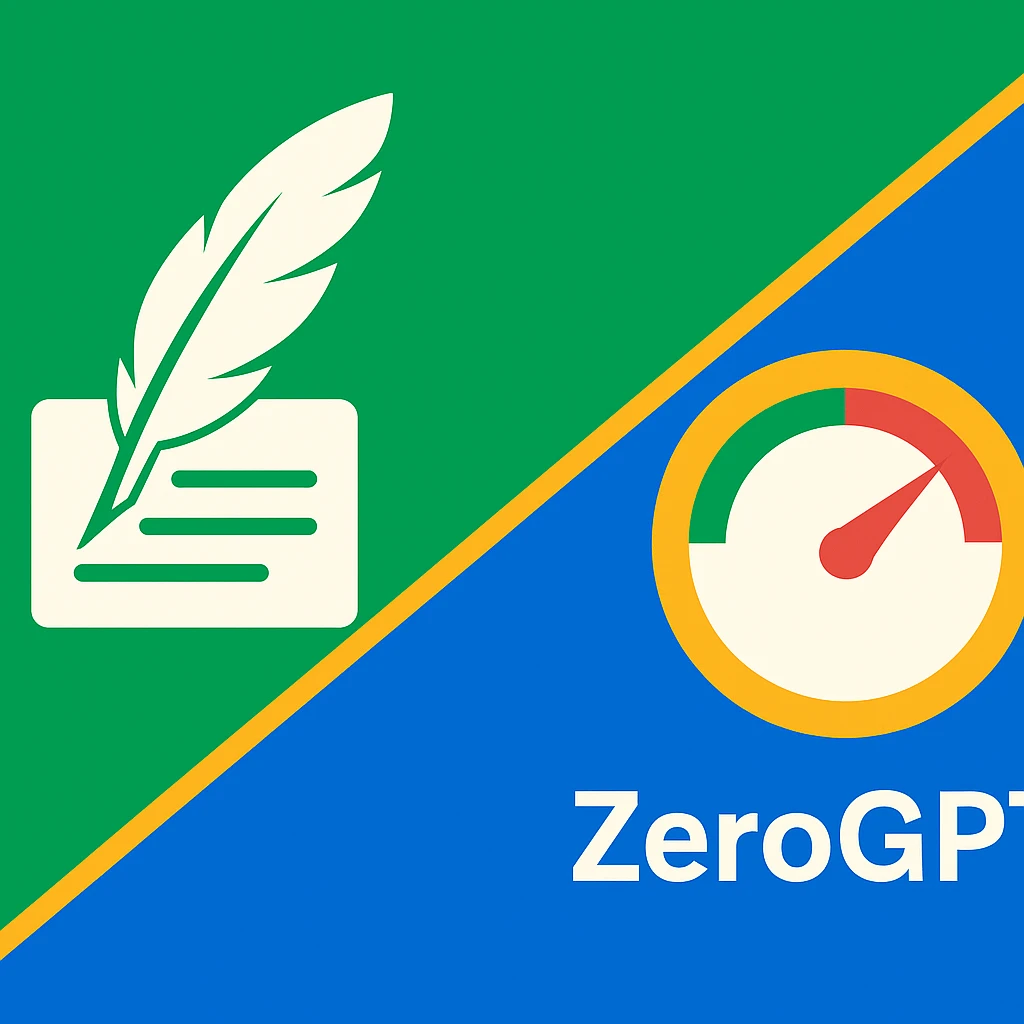
![[NO NONSENSE ANSWER] Is Turndetect Permanently Down?](/static/images/is-turndetect-downpng.webp)
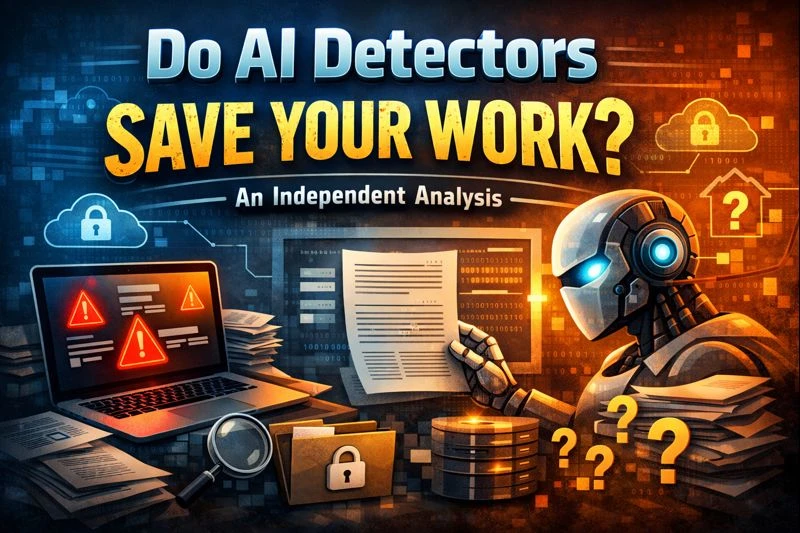
![[DIRECT ANSWER] Is iThenticate the same as Turnitin?](/static/images/is-ithenticate-the-same-as-turnitinpng.webp)

